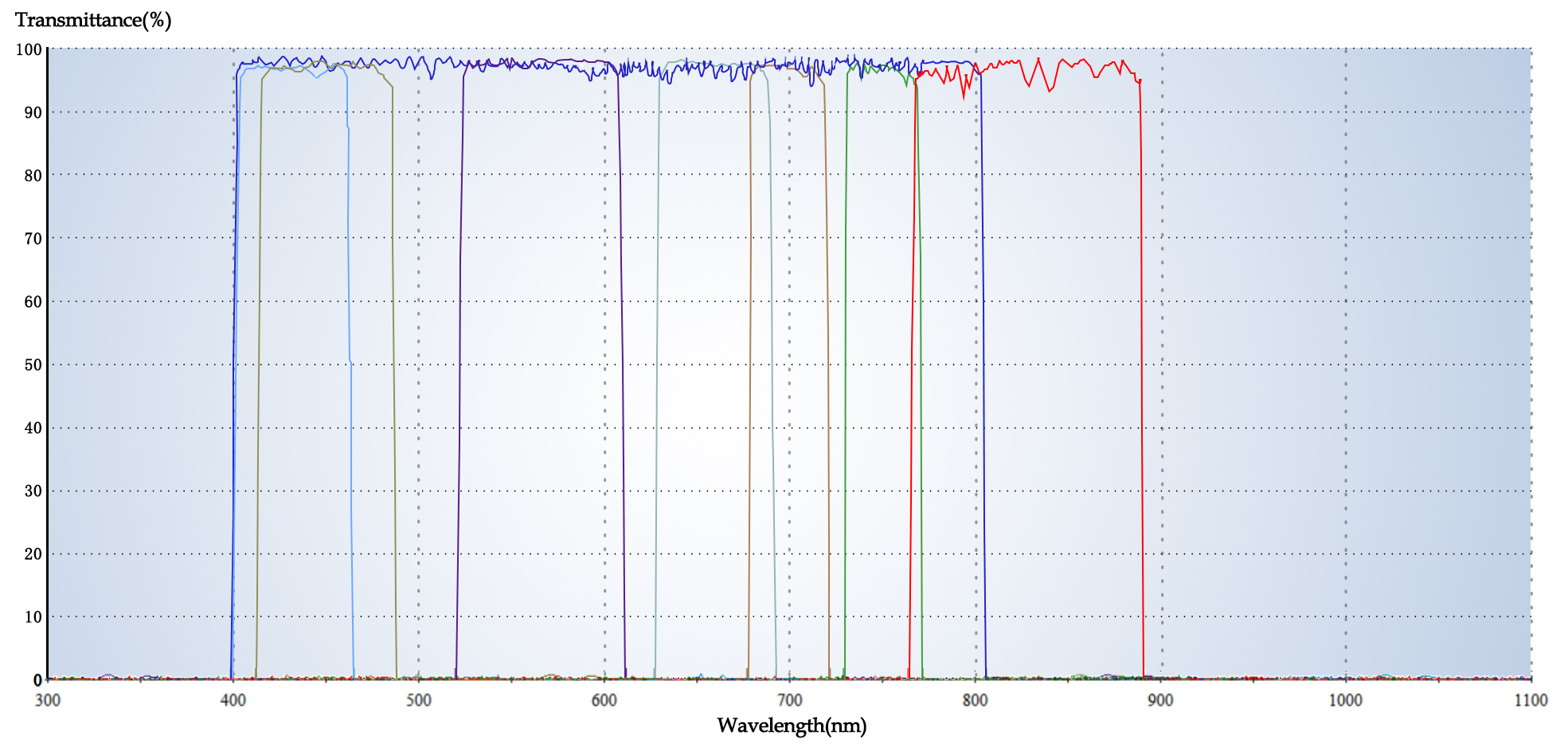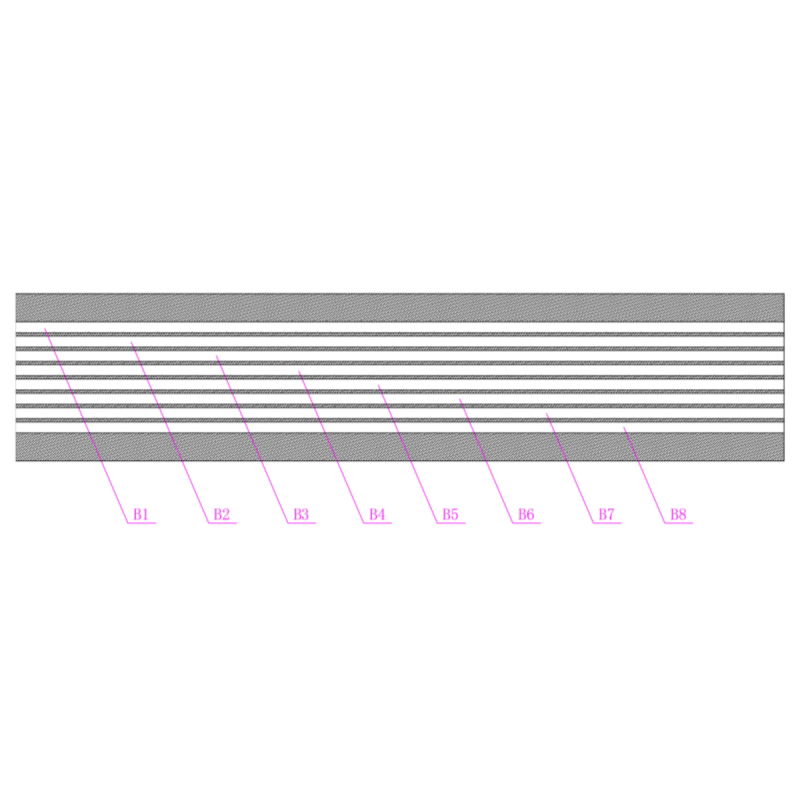Specifications:
| Central Wavelength | 450-850nm | Peak Transmission Rate | ≥92%(or customized) |
| FWHM | 20-400nm | Optical Density | ≥OD3 |
| Blocking Range | 300-1100nm | Splice Position Accuracy | 300-500µm |
| Size | 20-100mm (or customized) | Material | Optical Grade Glass |
Modules or Types:
| Central Wavelength(nm) | FWHM (nm) | Gradient (nm) | Optical Density (nm) | Average Transmission Rate(%) |
| 430±10 | 60±20 | 15 | OD≥3 @300-1100 |
T≥95% |
| 450±10 | 70±20 | 15 | ||
| 560±10 | 80±20 | 15 | ||
| 610±10 | 40±20 | 15 | ||
| 660±10 | 60±20 | 15 | ||
| 700±10 | 40±20 | 15 | ||
| 750±10 | 40±20 | 20 | ||
| 830±10 | 120±20 | 25 |
A Spliced Multispectral Filter is a special kind of optical filter that combines multiple single-spectral filters into one integrated multispectral filter using cutting and splicing techniques. These filters serve a crucial function in various optical systems. Assembling different spectral filters into a single unit enables precise and simultaneous spectral filtering across a wide range of wavelengths, the filters provide enhanced convenience for the acquisition of multispectral data with high spatial and spectral resolution, pushing the boundaries of advanced spectral imaging capabilities across various scientific, industrial, and medical fields in applications like remote sensing, medical imaging, biomedical research, and industrial inspection. Moreover, a single multiple-spectral filter can substitute several single-spectral filters, allowing a more compact and simple construction of the system.
Shalom EO offers standard and custom multispectral filters. Standard 8-channel versions are available. One technical ordeal for manufacturing spliced multispectral filters is the parallelism of the channel stripes, which Shalom EO has succeeded in conquering by utilizing precision-regulated cutting and splicing techniques to integrate multiple spectral channels. Throughout this process, we control with meticulous caution the parallelism of different channels to prevent light leakage at splice joints and ensure the strength and reliability of the splicing process. In addition, by securing the precise alignment of constituent filters, our spliced multispectral filter results in a signal-to-noise ratio, elevating your research, innovation, and applications to new heights. Compared with single multispectral filters, these spliced filters provide improved spectral isolation, higher transmission efficiencies, and reduced optical aberrations, resulting in better overall performance and image quality. Our multispectral filters are remarkable when combined with an imaging sensor such as a CCD, CMOS, SWIR, MIDIR, and LWIR to select a specific spectral range to be imaged on several pixels.
Transmission Curves of our standard spliced multispectral filters:
As shown in the transmission curves, our sample spliced multispectral filter exhibits high and flat transmission performance in the designed spectral channels, and effective rejection of the unwanted light.

Drawing:
